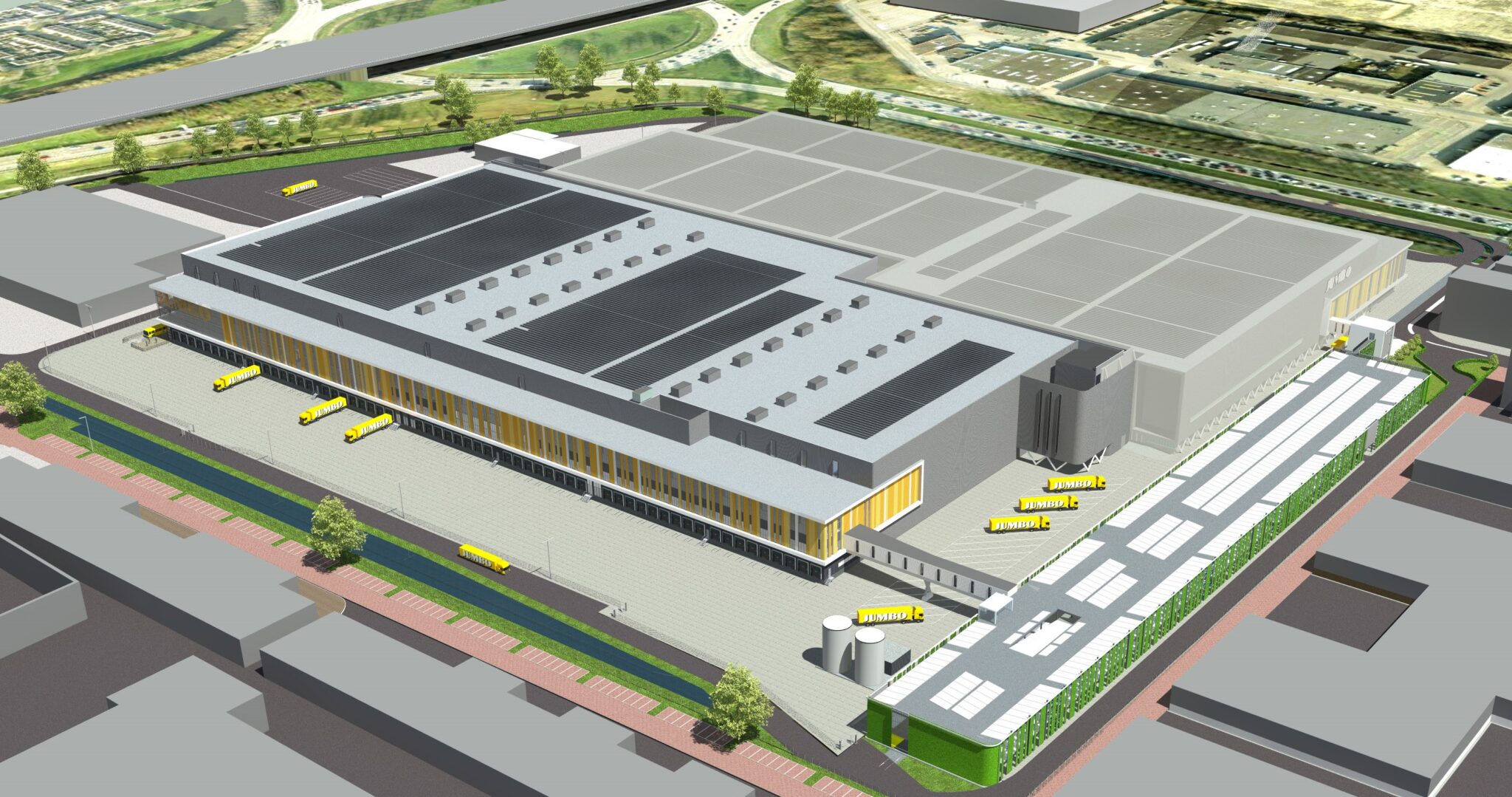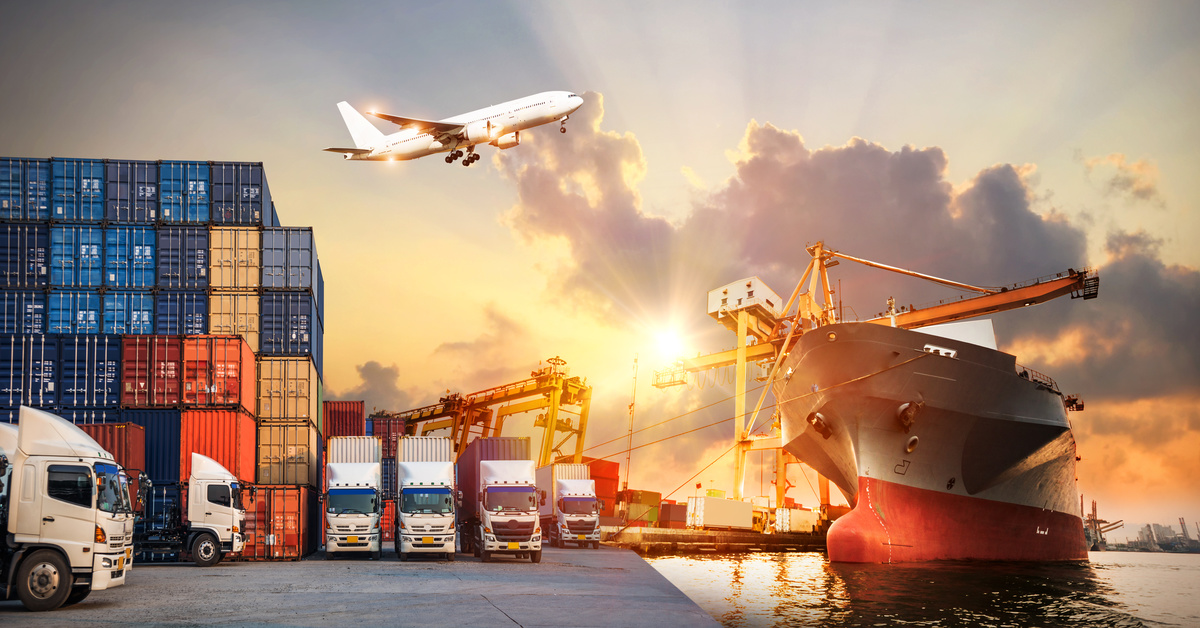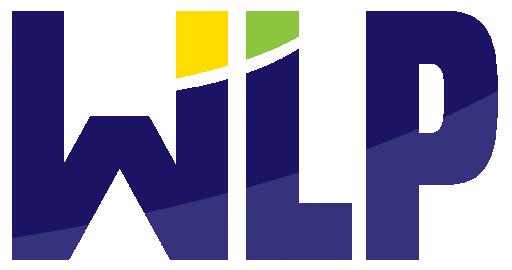The Dutch food retailer Jumbo is realising one of the most modern automated fresh food logistics centres in Europe with Witron Logistik + Informatik GmbH. From the beginning of 2024, the 40,000 sq m facility in Nieuwegein will supply all stores in the Netherlands and Belgium with almost 2,900 different fresh items – dairy items, cheeses, meat products, tapas, salads, chilled beverages, and much more with a shelf life of at least eight days.
The central distribution centre (CDC) is designed for an initial peak picking performance of more than 850,000 pick units per day. A modular expansion for future growth is already part of the overall concept. Furthermore, additional COM robotics lines are being installed in the existing dry goods warehouse during ongoing operations.
“The expansion of our store business, the growth of online shopping, and the increase of our product range – both fresh food and dry goods – demand short response times and high process flexibility. This is where we benefit from innovative and automated logistics systems, which we can scale efficiently as our requirements grow,” explains Karel de Jong, Director Supply Chain at Jumbo Supermarkten.
In an ambient temperature range of +2°C, the Witron robotic solutions Order Picking Machinery (OPM), Car Picking System (CPS), and All-in-One Order Fulfillment (AIO) automate all material flow processes for all product groups, product sizes, and distribution channels. In the shipping area, the roll containers are consolidated and made available in a mechanised shipping buffer via stacker cranes and heavy-duty lanes – in line with the tour, in the correct sequence, and just-in-time for dispatch.
In addition to high cost-efficiency and flexibility, the logistics designers from Witron focused particularly on reduction of heavy physical processes. And it is precisely here that the use of leading edge picking and IT solutions provides significant relief. In the future, case picking onto roll containers will be handled by the OPM system with 24 COM robotics lines, in line with store requirements and without the need for personnel. An expansion to 30 COM robotics lines is already considered in the concept.
Thanks to the AIO solution, worker walking distances are reduced to a minimum despite highly dynamic piece picking processes, with tote supply and removal from the pick fronts being handled by stacker cranes and conveyor systems. Heavy and bulky products are loaded onto roll containers by the employees in a route-optimised manner – controlled via the CPS – in line with store requirements. Here, too, pallet replenishment in the pick aisles is controlled by automated stacker cranes.
All logistics areas are connected by an efficient, 14km-long conveyor network, which includes a total of 9,500 pallet store locations and more than 600,000 tote- and tray storage locations, as well as 138 stacker cranes.
As the general contractor, Witron is responsible for the design and realisation of all mechanical, IT, and control components. A Witron OnSite team ensures a permanently high system availability.
Things are going great at Jumbo. Thus, the second-largest Dutch food retailer was not only able to expand its market share to 21.5% in 2020, but also increase its sales by 15% to €9.68 billion. In addition to many stores in the Netherlands, the number of Jumbo stores in Belgium was also further expanded.
The high pace of expansion naturally has an impact on the logistics processes. Therefore, Witron Logistik + Informatik GmbH, the general contractor from Parkstein, Germany was also awarded the contract for the expansion of the National Distribution Centre (NDC) in Nieuwegein, which supplies all Jumbo customers with 14,000+ items from the dry goods assortment, in addition to the implementation of the new fresh food central warehouse.
The existing installation will be expanded by 12 additional COM robotics lines (making a total of 32 COM robotics lines) and enables store-friendly picking of 2.6 million cases per week onto roll containers by Mid-2022. With reference to the OPM area, this corresponds to almost 60% more throughput.
The entire conveyor system as well as the automated high bay warehouse, located in front of the COM machines, will also be expanded by 6,000 locations and the automated tray warehouse by 176,000 locations. The technology will be integrated into the existing building with a size of circa 45,000 sq m.
“The expansion of the logistics centre was already fully considered in the original concept phase,” explains Jack Kuypers, Senior Vice President North-West Europe at Witron. “Based on the strong growth of Jumbo and the rapidly measurable economic success of the already operational OPM system for the customer, we are realising the upgrade earlier than originally planned.
“The OPM, DPS, and CPS solutions installed at Jumbo ensure a very high store and customer service for all distribution channels. Therefore, we are proud that we could make an important contribution to Jumbo’s positive business development as a life-time partner.”











